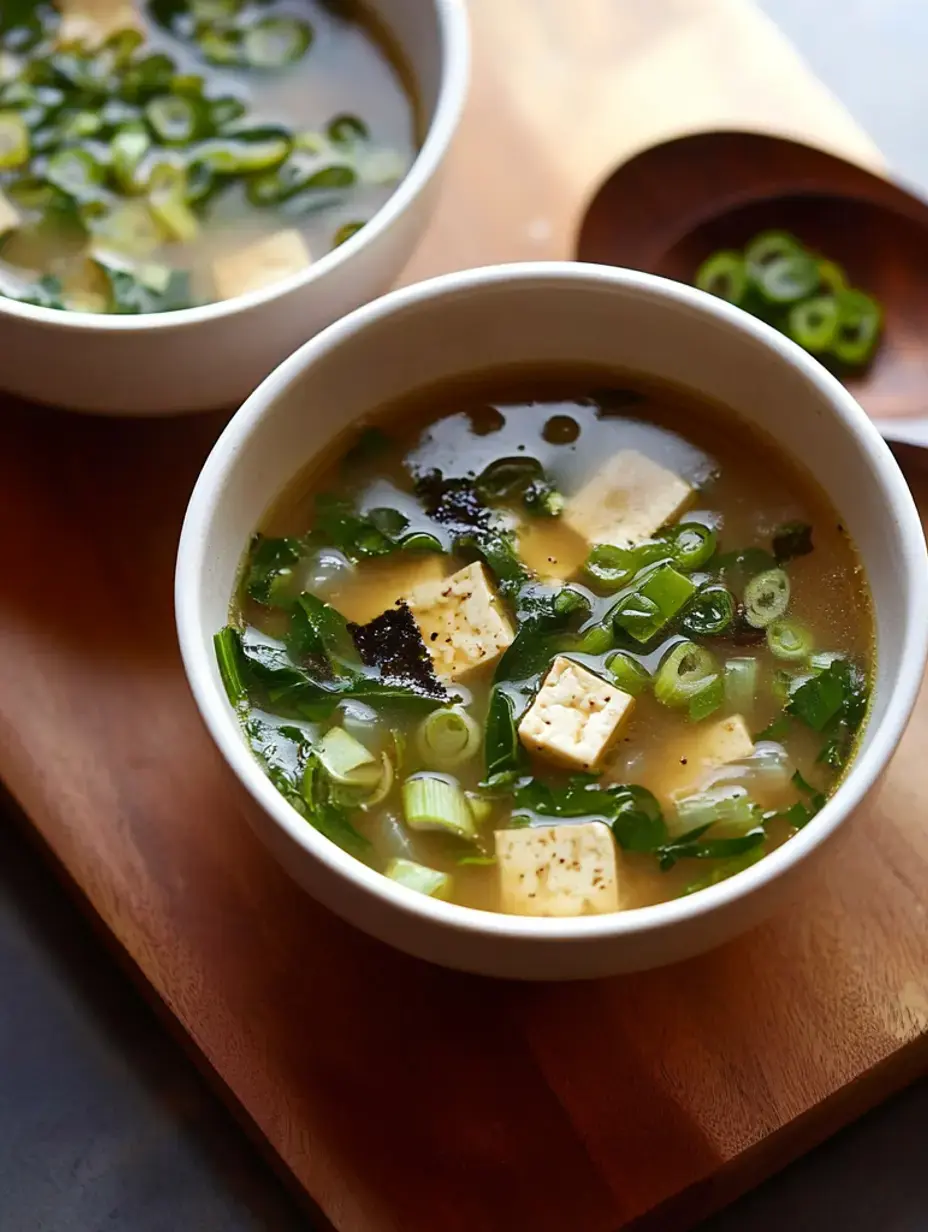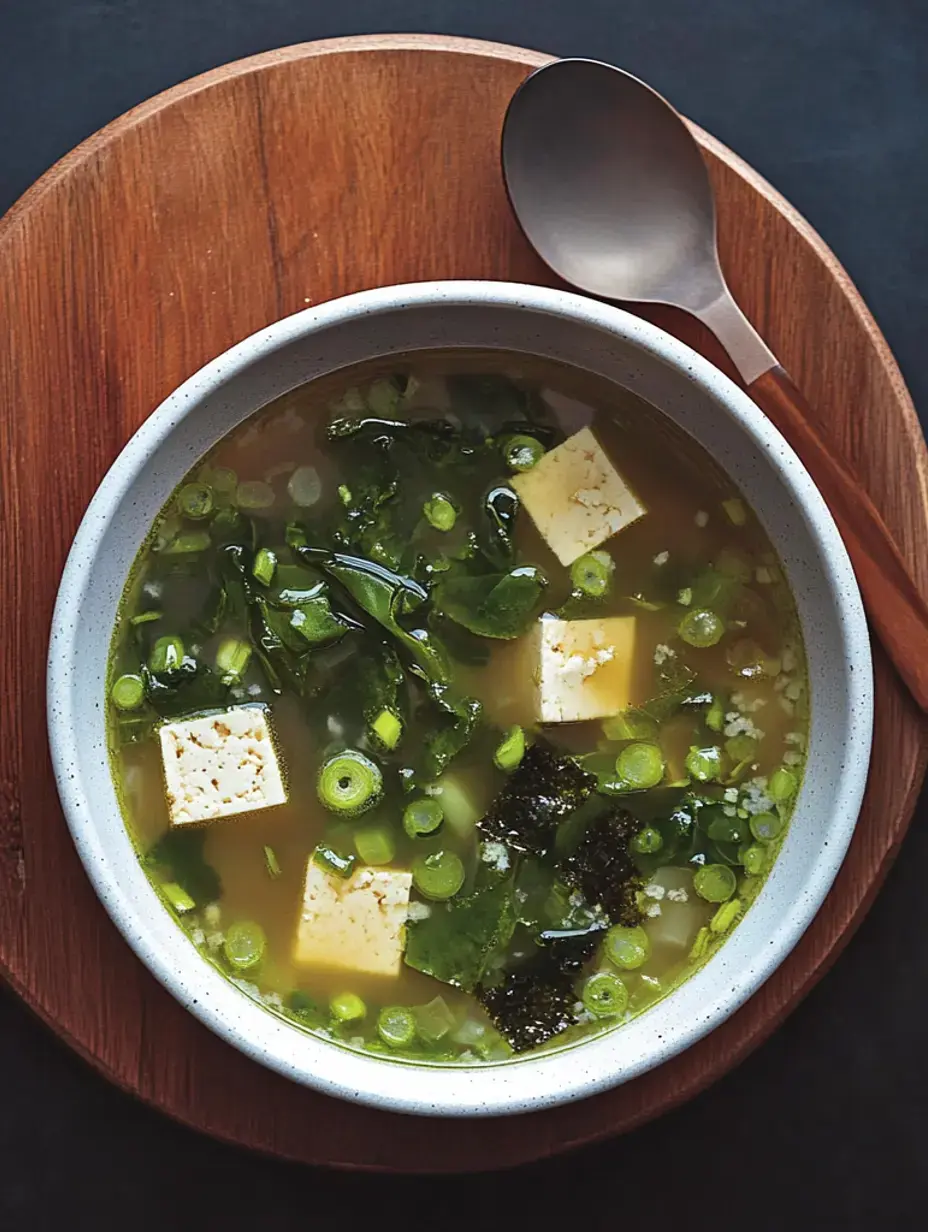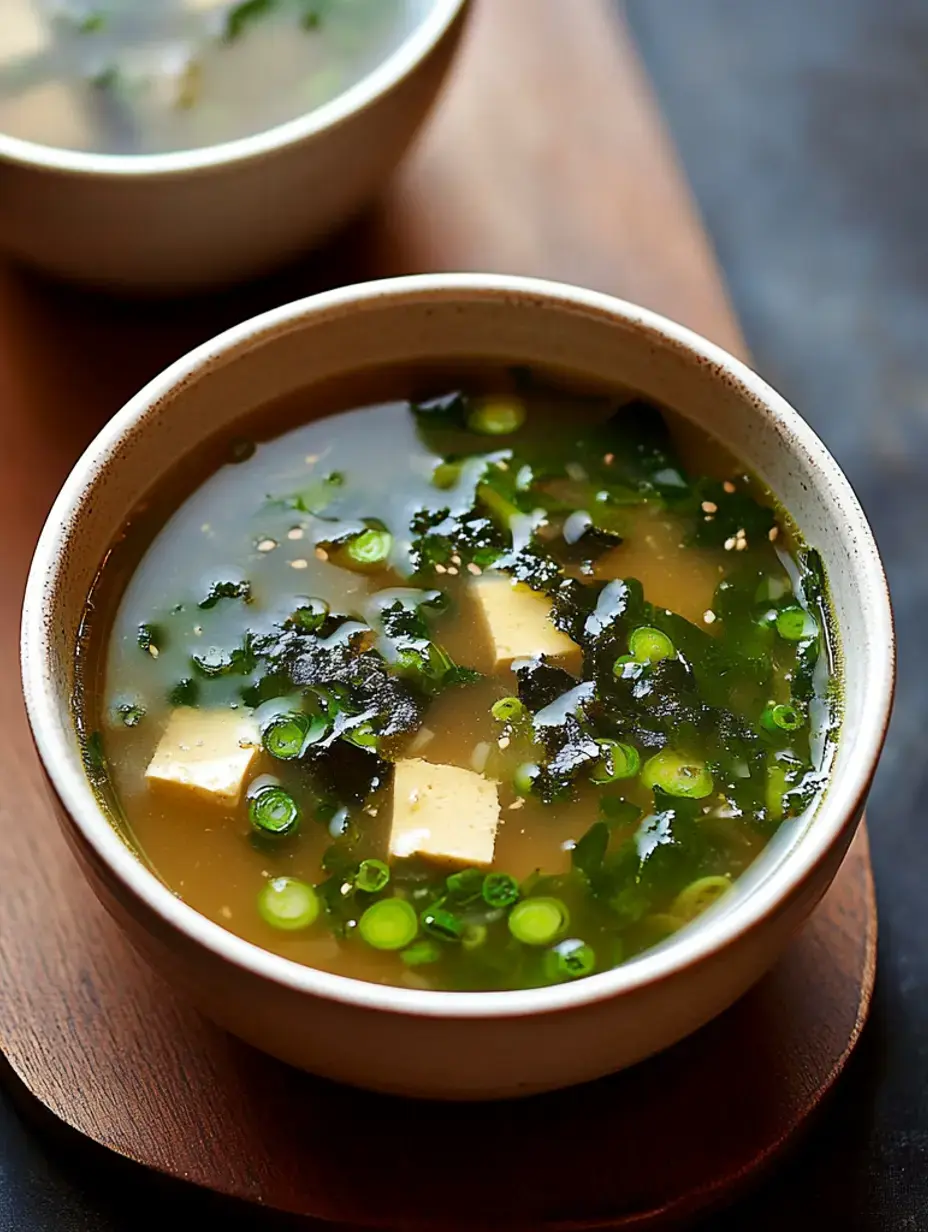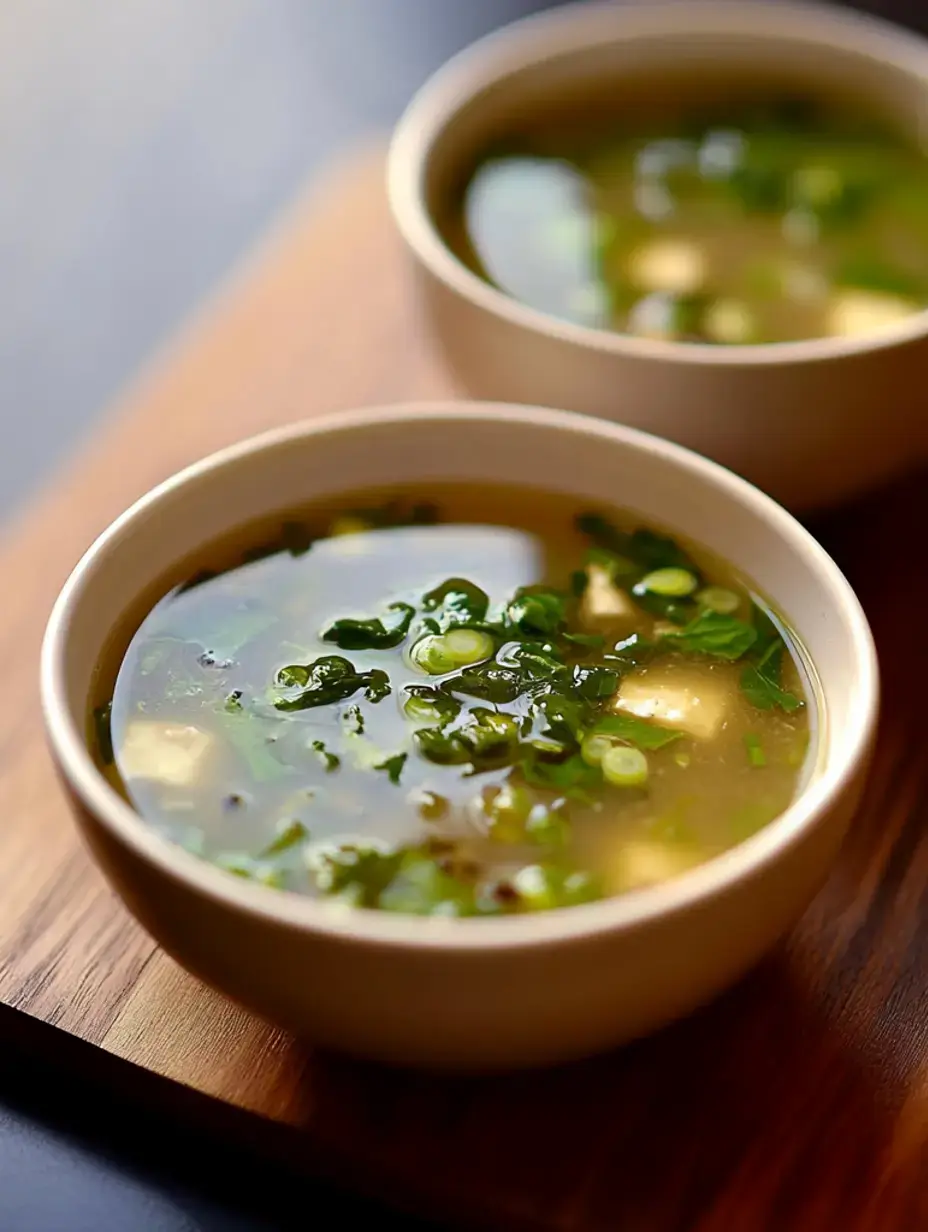 Pin it
Pin it
This classic miso soup recipe combines traditional Japanese flavors with nutritious ingredients for a comforting meal that's ready in just 15 minutes. The addition of fresh greens and tender tofu transforms this simple soup into a satisfying bowl perfect for any time of day.
Health Benefits
Miso soup provides beneficial probiotics along with essential vitamins and minerals. The fermented miso paste delivers umami flavor while supporting digestive health. Combined with protein-rich tofu and mineral-packed greens, this soup offers excellent nutritional value.
Essential Ingredients
- Miso Paste: White or yellow miso provides a mild, balanced flavor
- Vegetable Stock: Creates a flavorful base
- Firm Tofu: Adds protein and texture
- Swiss Chard: Tender greens that wilt perfectly
- Scallions: For fresh, aromatic flavor
- Nori Seaweed: Brings authentic ocean notes
Preparation Steps
- Prepare Miso
- Whisk miso paste with hot water until completely smooth
- Heat Stock
- Bring stock to simmer and add prepared greens
- Cook Tofu
- Gently add tofu cubes to maintain their shape
- Finish Soup
- Remove from heat before stirring in miso mixture
Traditional Origins
Miso soup has been central to Japanese cuisine for over 1,300 years. While this version incorporates modern adaptations, it maintains the essential elements that have made this dish a staple of Japanese cooking.
 Pin it
Pin it
Customize Your Bowl
The recipe adapts well to different vegetables and seasonings. Try adding mushrooms, different greens, or chili flakes for extra heat. The basic recipe serves as a foundation for endless variations.
Serving Suggestions
Miso soup works well for any meal, from a light breakfast to a comforting dinner. Its versatility and quick preparation make it an ideal choice whenever you need something nourishing.
Storage Tips
Store leftover soup in an airtight container in the refrigerator. When reheating, warm gently and avoid boiling to preserve the beneficial properties of the miso.
Serving Companions
Serve alongside steamed rice for a simple meal or pair with homemade sushi for a more elaborate spread. A sprinkle of toasted sesame seeds adds visual appeal and nutty flavor.
Recipe Features
This recipe combines minimal preparation with maximum flavor. The short cooking time and straightforward technique make it accessible for cooks of all skill levels.
 Pin it
Pin it
Nutritional Value
Each bowl provides essential nutrients including B vitamins, zinc, and protein. The combination of ingredients creates a balanced, wholesome meal.
Simple Substitutions
Regular vegetable stock works well in place of traditional dashi. This adaptation maintains the soup's essential character while using readily available ingredients.
Kid-Friendly Options
Children enjoy helping prepare the ingredients and discovering different components in their bowls. Cut tofu into fun shapes to make the dish more appealing to young diners.
Key Techniques
Avoid boiling the soup after adding miso. Adjust seasoning to taste and cut vegetables thinly for even cooking. These simple techniques ensure consistent results.
Recipe Variations
Incorporate soba noodles or additional vegetables to create heartier versions. The basic recipe provides a foundation for creative interpretations.
 Pin it
Pin it
Garnish Options
Finish with sesame seeds, chili oil, or extra scallions. These garnishes enhance both presentation and flavor.
Quick Solution
This soup provides warming comfort in just fifteen minutes. Perfect for busy evenings when time is limited but quality matters.
Advance Preparation
Prepare stock and cut vegetables ahead of time. Store components separately until ready to combine for the fastest possible assembly.
Sustainable Choice
Plant-based ingredients and minimal packaging make this recipe environmentally conscious. Tofu and miso provide sustainable protein alternatives.
Beginning Point
This recipe serves as an excellent introduction to Japanese cooking. Its forgiving nature and reliable results make it ideal for novice cooks.
 Pin it
Pin it
Frequently Asked Questions
- → What kind of miso works best?
- You’ll want white or yellow miso. If you’re avoiding animal products, double-check the ingredients since some include fish, like bonito.
- → Can I swap the greens?
- Totally! Try sturdy greens like kale or spinach—they hold up well with a quick cook.
- → Why is miso mixed separately first?
- Dissolving miso in hot water separately keeps it smooth and evenly blended in your soup.
- → Can I save extras for later?
- It’s best fresh! The soup loses its flavor and texture when stored or reheated.
- → What type of tofu is best?
- Firm tofu is the quickest option, but if you want something more traditional, go with soft silken tofu and add it right at the end.
